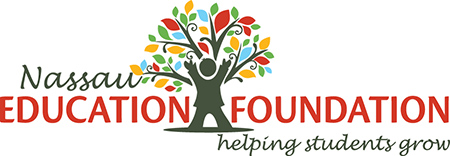Robotics Club
- School:
- Emma Love Hardee Elem.
- Subject:
- Stem
- Teacher:
- Krista Hodges
- Students Impacted:
- 20
- Grade:
- 4
- Date:
- March 13, 2019
Investor
Thank you to the following investor for funding this grant.
Nassau Education Foundation - $1,000.00
Original Grant Overview
Goal
Students will become proficient in drop-down programming algorithms so that the FLL (First Lego League) robot will follow various sensor variables in order to rotate the motors. Students will become familiar with engineering terms like torque, speed, power, efficiency, gear ratios, linkage and mechanical solutions in building the FLL robot. Furthermore, students will learn 21st century soft skills like communication, collaboration and creative thinking/problem solving as they work in small groups to overcome challenges.
What will be done with my students
Students will be partnered up in groups of 2-3 based on their STEM strengths (engineering, programming, facilitating, etc.). Once partnered up students will take turns building various styles of robots, attachments and drive trains. This will help them understand the different LEGO pieces and how they work through friction, energy transformation, gear ratios and linkage. Afterwards, they will start programming with basic motor functions and progress to using the FLL sensors to guide the robot based on color, angle rotation, and distance location with ultrasonic waves.
From there, they will identify various challenges, solutions and strengths within the FLL challenge kit. They will record ideas on how to overcome these challenges, weigh out the positives and negatives for each, and determine the best course of action in order to be successful. Students will identify achievable outcomes and goals within the challenge mat and share with each other technical difficulties as they progress.
Benefits to my students
The students will benefit from their experiences because they will have experience with programming through the understanding of input/output, independent variables and dependent variables, If/Then loops, and the understanding of how to make a program more efficient. This will help them build a platform of understanding so that when they move on to advanced programming like Java, Python, and Perl they understand the fundamentals.
With the building of the robot, students will understand the science and engineering concepts of efficiency, friction, linkage, fulcrum, strength, power and work. They will understand how gearing up speeds up the motion and decreases the torque and how gearing down allows for more torque, but less speed. This will transfer in the real word in understanding mechanical engineering.
Together, these activities will give students the strategies to understand how to communicate effectively, how to collaborate with different participants in a productive manner and how to brainstorm ideas in order to solve a problem.
Budget Narrative
The students will benefit from their experiences because they will have experience with programming through the understanding of input/output, independent variables and dependent variables, If/Then loops, and the understanding of how to make a program more efficient. This will help them build a platform of understanding so that when they move on to advanced programming like Java, Python, and Perl they understand the fundamentals.
With the building of the robot, students will understand the science and engineering concepts of efficiency, friction, linkage, fulcrum, strength, power and work. They will understand how gearing up speeds up the motion and decreases the torque and how gearing down allows for more torque, but less speed. This will transfer in the real word in understanding mechanical engineering.
Together, these activities will give students the strategies to understand how to communicate effectively, how to collaborate with different participants in a productive manner and how to brainstorm ideas in order to solve a problem.
Items
| # | Item | Cost |
|---|---|---|
| 1 | (2) LEGO 45544 Mindstorms EV3 Core Set | $800.00 |
| 2 | (2) LEGO MINDSTORMS Education EV3 Expansion Set | $200.00 |
| Total: | $1,000.00 |


Share
Please share this page to help in fulfilling this grant.
Email to a Friend